ASUS TUF GAMING Radeon RX 6800 XT OC 16GB
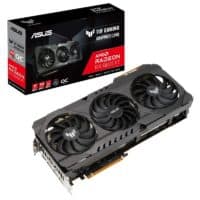
Axial-tech fan design has been enhanced
An all-aluminum shroud
GPU Tweak II provides intuitive performance tweaking, thermal controls, and system monitoring
Good value
Basic design
The more reasonably priced flagships
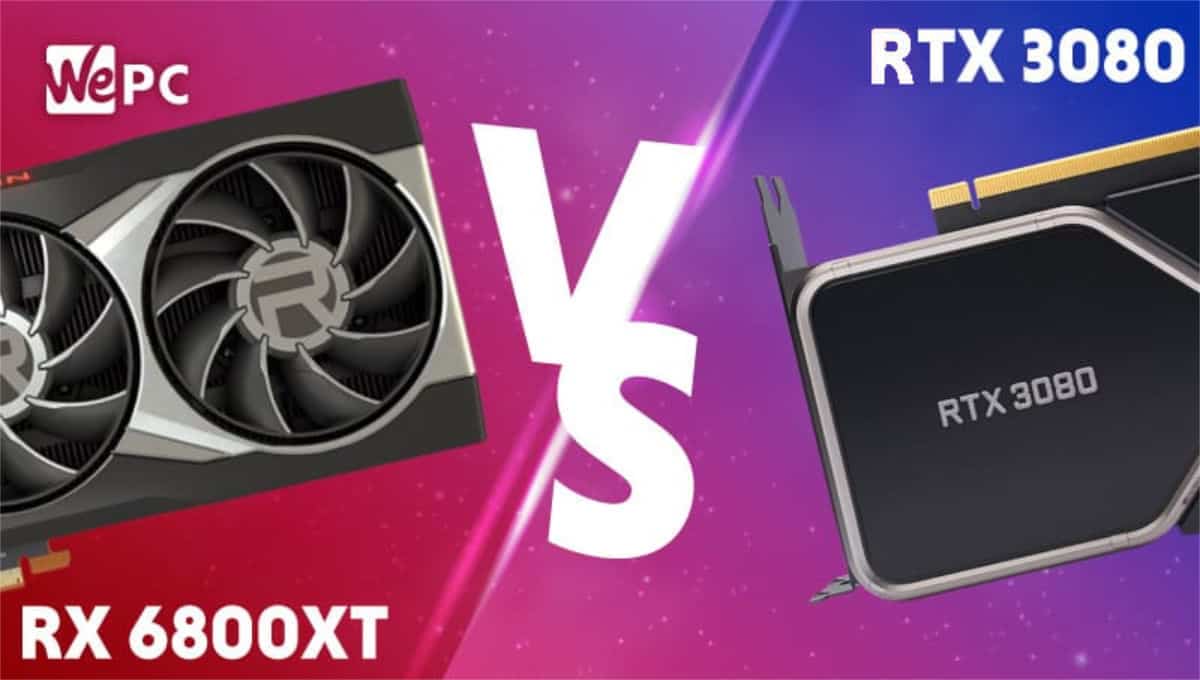
WePC is reader-supported. When you buy through links on our site, we may earn an affiliate commission. Prices subject to change. Learn more
These two graphics cards came out as part of the initial generational release, but we take a closer look at the 6800xt vs 3080 battle. Comparing the two cards we take a look to see which is the best graphics card for you. It’s not just down to the raw performance but also the price and features of the two GPUs.
The AMD vs Nvidia battle is fierce and has never been so close. With plenty of great choices from both, there are lots of factors to consider. And if you’re looking at the powerful options that are less likely to break the bank we compare the 6800XT vs RTX 3080.

Axial-tech fan design has been enhanced
An all-aluminum shroud
GPU Tweak II provides intuitive performance tweaking, thermal controls, and system monitoring
Good value
Basic design
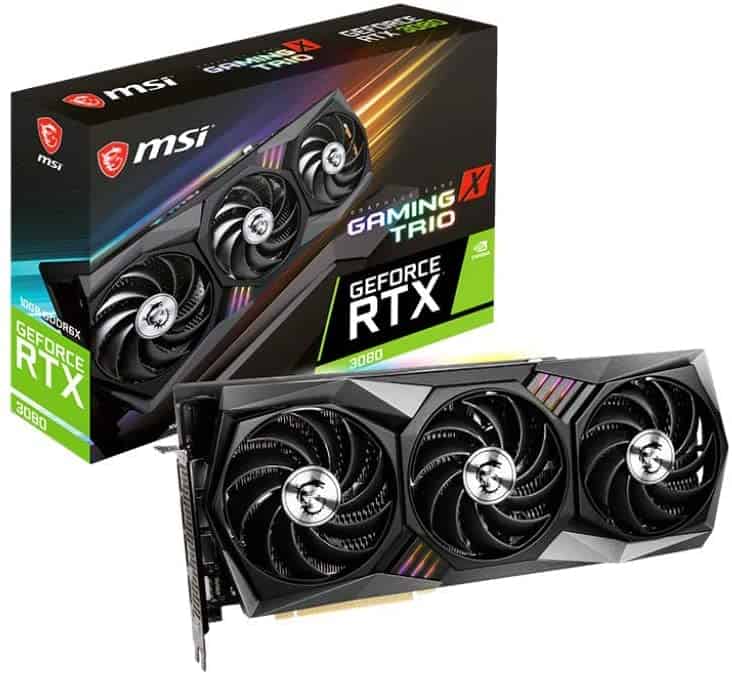
Extremely attractive 3080
Very quiet thermal design
High out-the-box clock boost
Excellent build quality
Lies within the higher end of the 3080 price spectrum
The first comparison we take a look at is between the architecture of the GPUs. Encompassing the heart of the card it is where the hard work is done and the core differences are situated. With that, the differences between the Navi and Ampere builds are significant and make it difficult to have a direct comparison between the two. But there are plenty of other features that can be used for the 6800XT vs RTX 3080 fight and a general idea can be made.
The AMD card features the Navi 21 XT 215 die and the Nvidia card uses the GA102 200 chip. They are also manufactured in different ways with Nvidias Samsung 8nm process as compared to AMD sticking with TSMCs 7nm process. Giving Radeon cards a slightly more compact build. Which gives them a smaller die size of 520mm2 compared to the 628mm2 die on the 3080. Giving Nvidia more space to fit its 28.3 billion transistors, 1.5 billion more than on the AMD card.
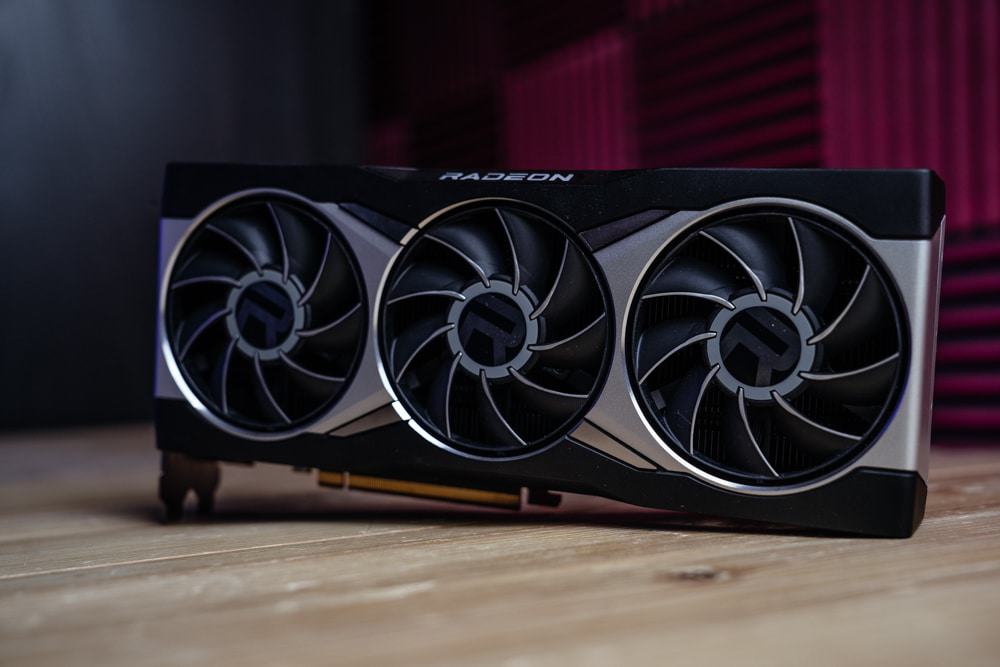
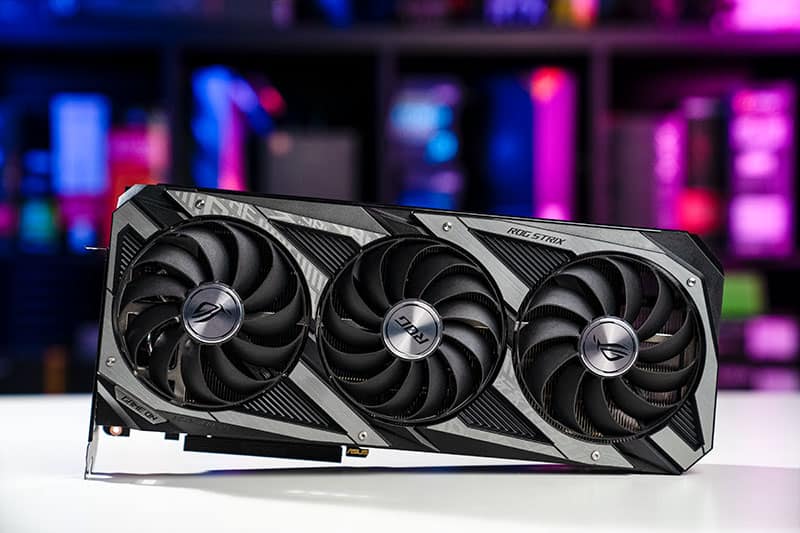
| RX 6800 XT | RTX 3080 | |
|---|---|---|
| GPU | Navi 21 XT (215-121000177) | GA102-200-KD-A1 |
| Shaders | 4608 | 8704 |
| RT Cores | 72 | 68 |
| TMUs | 288 | 272 |
| Memory | 16GB GDDR6 | 10GB GDDR6X |
| Base clock | 1825MHz | 1440MHz |
| Boost clock | 2250MHz | 1710MHz |
| Memory clock | 16 Gbps | 19 Gbps |
| Card bus | PCIe 4.0 x16 | PCIe 4.0 x16 |
| Memory bandwidth | 512.0GB/s | 760.3GB/s |
| TDP | 300W | 320W |
Specs between the two cards are very close and trading blows plenty of the different parts of the graphic cards. We’ll take a look at what each of these means for you and the performance between the two cards.
One big difference between the two GPUs is the amount of VRAM in them. Here the AMD card takes the lead in capacity, featuring 16GB of GDDR6 VRAM compared to 10GB of GDDR6X. But it is slower memory than the RTX has to offer, with the 6800 XT only having a max bandwidth of 512GB/s instead of 760.3GB/s.
The faster rate of processing does give an advantage when processing higher resolutions. But a higher capacity is also a good choice, both of these giving performance increases. It will come down to which is a better overall helper when being used.
Silicon clock speeds are determined by how fast the crystal is able to cycle. Which in turn processes the instructions and graphics so faster rates work through everything much quicker. In the 6800XT vs 3080 matchup, the Radeon card has a clear advantage in terms of clock speeds in all circumstances.
With a base clock of 1,825MHz and a boost clock of 2,250MHz. Compared to the 3080 which has a base clock of 1,440MHz and a boost clock of 1,710MHz. This means AMD has much faster performance even at their base level. With that speed, it can compete well with the rest of its drawbacks. Even still there is also plenty of opportunities to overclock the GPUs as well to further improve their performance.
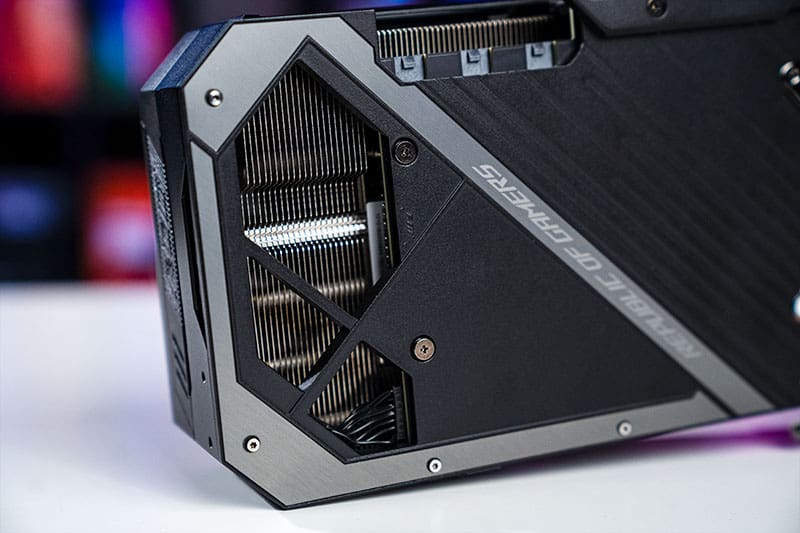
The cores make up the GPU die and there’s some consistency across the two different brands. Consisting of shaders, texture mappers, and ray tracing cores. Each of these works on specific tasks and makes graphics possible. With the work of shaders darkening the scenes, TMUs creating 3d images from a bitmap and ray tracing working on excellent lighting.
For shaders, Nvidia has 8,704 when AMD only has 4,608, with such difference it means better shading from its card. With the possibility of it working through those problems much better and faster. However, in other terms, the 3080 slightly falls behind. It has four fewer ray-tracing cores and 16 fewer TMU cores. This isn’t a great difference but may provide some advantage to the Radeon card.
The TDP of a chip is the maximum amount of heat generated at the maximum power. It gives you an idea of how much of a radiator your graphics card will be but also how well the design solution has to work to expel that energy. The 6800 XT has a 20W lower TDP, meaning it will produce less heat, as well as use less energy to give off as waste heat. So if your concern is power consumption that the AMD card does a much better job on that side.
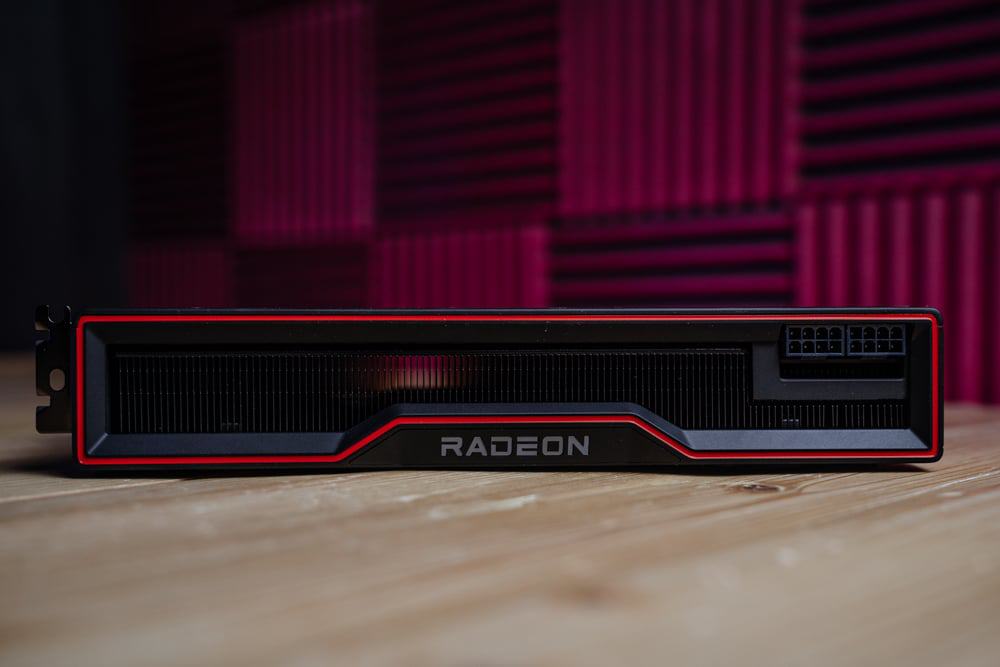
3dmark gives a simple benchmark up against the two cards and sees how well they perform. In TimeSpy the 6800 XT achieves a graphics score of 17,275 with the 3080 getting 17,832. This does give the advantage to the Nvidia card but with only a 500 point difference. Not a big win and so might not be as significant in other situations.
However, in ray tracing Nvidia’s solution is still the best around. Even with a disadvantage in cores, their software and architecture overpower the competition. The card achieved a score of 11,449 in the 3D Mark Port Royale test, whereas the RX 6800 XT only gets 8,873.
From TechSpot’s benchmarks, we see in gaming the close nature of the two cards. For 1080p the 3080 is 3% slower on average. But at higher resolutions, it averages higher by 1% at 1440p and 7% at 4k. Coming from the much better raytracing implementation.
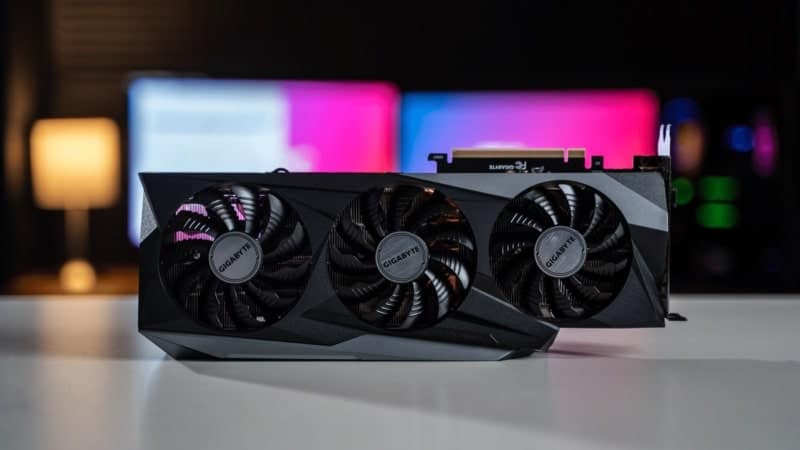
MSRP of the 6800 XT is $649, with the RTX 3080 launching at an MSRP of $699. So with the $50 difference, there isn’t much of a price change over the two cards. With the performance difference, it can sway some people over to one or the other card.
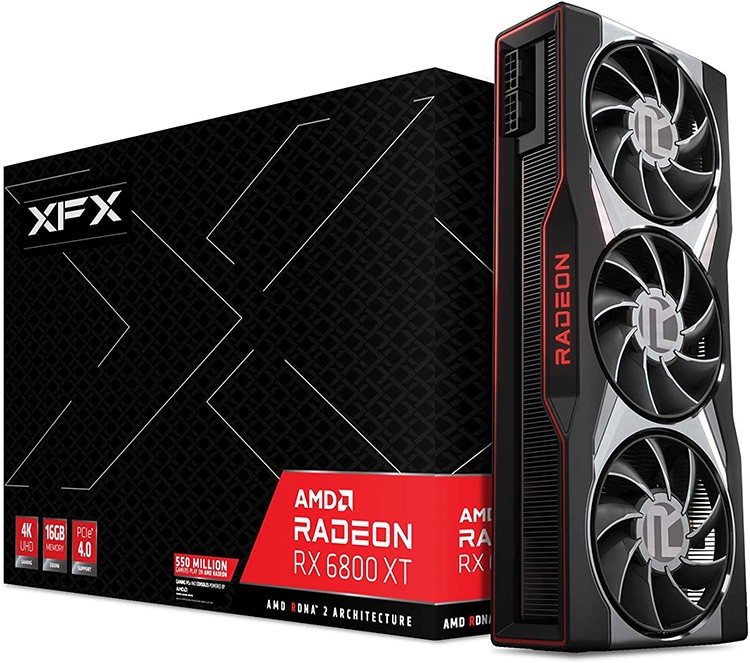
Hardware ray tracing (72 cores)
Solid frame rate performance in high resolutions
Integrated AMD Fidelity FX
Fairly decent price
AMD Freesync reduces chances of screen tear
Radeon Anti-Lag protocol
Great XFX enclosure and triple-fan cooling system
16GB GDDR6 VRAM
Not quite as fast as our top picks
Shop on Amazon
CHECK PRICE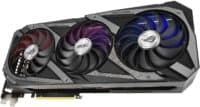
Very good build quality
Attractive design
The building blocks for the world’s fastest, most efficient GPU
Axial-Tech Fan Design
Quite pricey
Overall, comparing the 6800 XT vs 3080 it’s hard to knock down the 3080 for outperforming in each situation. It is the better option at their MSRP prices. They do trade blows in terms of performance, but what the extra $50 will get you is raytracing performance, Where Nvidia easily wins out and might be worth it for some.
Looking at their clock rate, we see the AMD card leading again. The 6800 XT has a 27% faster base clock, and a 32% faster boost clock than the 3080. But it does lose out in terms of memory clocks. With the 3080 having a 19% higher rate leading to a 49% higher bandwidth.
When looking at the performance we look at 3DMarks benchmarks. There the 6800 XT achieves a graphics score of 17,275 with the 3080 getting 17,832. The gap grows bigger when looking at ray tracing in Port Royal. There we see it get 11,449 compared to 8,873. So the 3080 leads by 3% and 29% over the 6800 XT.
Then in gaming, the 3080 averages 3% lower framerates at 1080p. But increasing resolutions it leads the 6800 XT by 1 and 7%. Skewed by its raytracing performance.